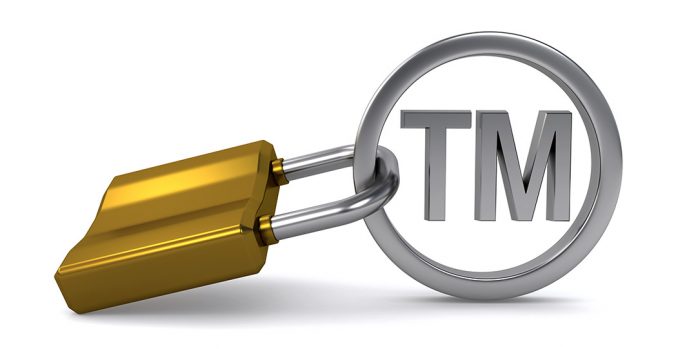Thanks to a 2017 Supreme Court ruling, a ban on trademarks that were “scandalous” or “immoral” in nature has been ruled unconstitutional. What does that mean for your club’s trademark? Attorney Maxine Lynn of SexTechLaw.com explains!
For decades, trademarks including sexually-explicit language or imagery were denied registration at the U.S. Patent & Trademark Office (USPTO). Repeatedly, trademarks of companies in the adult industry were rejected as banned for being “scandalous” or “immoral.” However, that all changed last year in 2017 when a high court struck down the ban as unconstitutional. This is a massive win for the industry, but for businesses to take advantage, they need to get up to speed on the basics of trademark selection, registration, and use. I know the subject sounds dry, but hey, we can’t be wet all the time!
In short, trademarks are source identifiers: They indicate the brand from which goods or services emanate. A trademark can include words, names, symbols and sounds. Over time, a well-managed brand includes one or more trademarks that earn a reputation and goodwill, which are valuable assets. It’s vital to protect these assets with trademark registrations, which are granted by the USPTO in the United States. A federal registration gives the owner the right to exclusive use of the trademark throughout the entire country, as well as many other important benefits.
Over time, a well-managed brand includes one or more trademarks that earn a reputation and goodwill, which are valuable assets. It’s vital to protect these assets with trademark registrations, which are granted by the USPTO in the United States. A federal registration gives the owner the right to exclusive use of the trademark throughout the entire country, as well as many other important benefits. – Lynn
When developing a new brand, a good starting point is a trademark search. You will not be able to register a trademark that is confusingly similar in appearance or sound to trademarks previously registered by another company for goods or services like yours. A search will reveal any such issues. If the search results are “clear,” then you have a green light to move forward with a trademark application. If they are not clear, you can modify your trademark or choose a new one. If you choose a new one though, remember that you’ll need to repeat the search process.
You’ve picked your trademark:
Now what?
Once you’ve picked your trademark, you’ll need to file a trademark application. You can do this yourself, but it will probably work out better if you hire an experienced trademark attorney. In any case, there are two types of trademark applications to be aware of: “use” and “intent-to-use.” You’ll need to file a “use” based application, with proof of use, when you have already begun continuously selling goods or services (over state lines) using the mark prior to filing. Instead, when you want to “reserve the name” since you have not yet started using the trademark at the time of filing, you’ll need to file an “intent-to-use” based application. You can then certify use later.
Once the application is on file at the USPTO, a trademark examining attorney will review the application. The review includes a search of USPTO records to check for confusingly similar prior-filed or registered trademarks. The examining attorney will also evaluate the trademark for descriptiveness and generic-ness. Generic marks are not registerable; they name the good or service by its true name. For example, you cannot register “Apple” for apples since otherwise no one would be able to refer to the fruit without infringing on the trademark. Descriptive marks describe an aspect of the goods or services to which they apply, and are only registerable in certain circumstances. If there are any concerns, the examining attorney will issue a rejection to which you’ll have the opportunity to reply.
After the application is allowed at the USPTO, it gets published for opposition for 30 days in The Trademark Official Gazette. This gives third parties a chance to object to registration of your trademark if they believe it will harm them. If an opposition is filed, an administrative procedure is initiated. In most cases, an opposition does not occur, however, you do need to be prepared for the possibility.
Assuming there is no opposition, a registration will issue for your trademark. The registration lasts indefinitely so long as proper declarations and renewals are filed at the appropriate times. To keep the registration valid though, you’ll also need to continuously use the mark in interstate commerce for the duration of the life of your registration.
A trademark registration will deter others from stepping onto your turf with a similar mark. However, if someone roguely infringes, you’ll be able to rely on the registration as a basis to sue in federal court, as evidence that the trademark is yours and only yours, and to show that the trademark is valid. So, now that registrations are available for sexually-explicit trademarks, get your brand protected!
Maxine Lynn is an intellectual property (IP) attorney with the law firm of Keohane & D’Alessandro, PLLC, having offices in Albany, New York. She focuses her practice on prosecution of patents for technology, trademarks for business brands, and copyrights for creative materials. Through her company, Unzipped Media, Inc., she publishes the Unzipped Sex, Tech & the Law® blog at www.SexTechLaw.com.
Disclaimer: The content of this article constitutes general information, and is not legal advice. If you would like legal advice from Maxine Lynn, an attorney-client relationship must be formed by signing a letter of engagement with her law firm. To inquire, visit www.Sextech.Lawyer.































